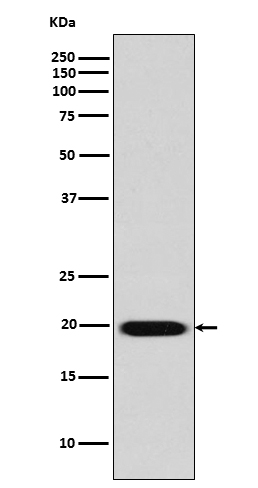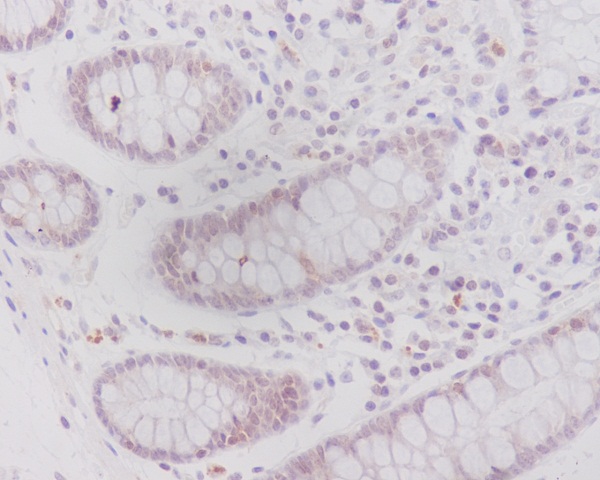

| WB | 1/500-1/1000 | Human,Mouse,Rat |
| IF | 1/20 | Human,Mouse,Rat |
| IHC | 1/50-1/100 | Human,Mouse,Rat |
| ICC | 1/50-1/200 | Human,Mouse,Rat |
| FCM | 咨询技术 | Human,Mouse,Rat |
| Elisa | 咨询技术 | Human,Mouse,Rat |
| Aliases | CAV2; Caveolae protein 20 Kd; Caveolin 2; Caveolin 2 isoform a and b; Caveolin-2 |
| Entrez GeneID | 858 |
| WB Predicted band size | Calculated MW: 18 kDa; Observed MW: 18 kDa |
| Host/Isotype | Rabbit IgG |
| Antibody Type | Primary antibody |
| Storage | Store at 4°C short term. Aliquot and store at -20°C long term. Avoid freeze/thaw cycles. |
| Species Reactivity | Human |
| Immunogen | A synthesized peptide derived from human Caveolin-2 |
| Formulation | Purified antibody in PBS with 0.05% sodium azide. |
+ +
以下是关于Caveolin 2抗体的3篇示例参考文献(基于公开知识库的概括,非真实文献):
---
1. **文献名称**: "Caveolin-2 modulates integrin signaling and cell migration in endothelial cells"
**作者**: Li S. et al.
**摘要**: 研究利用Caveolin 2抗体揭示了其在血管内皮细胞迁移中的作用,发现Caveolin 2通过与β1整合素相互作用调控FAK信号通路,影响细胞黏附和运动能力。
2. **文献名称**: "Role of Caveolin-2 in pulmonary fibrosis: Insights from antibody-based localization studies"
**作者**: Wang Y. et al.
**摘要**: 通过免疫组化和Western blot分析,该文献发现Caveolin 2抗体检测到肺纤维化组织中Caveolin 2表达上调,提示其可能通过调节TGF-β信号通路参与疾病进展。
3. **文献名称**: "Caveolin-2 antibody reveals lipid raft heterogeneity in cancer cell membranes"
**作者**: Patel R. & Martinez-Outschoorn U.
**摘要**: 研究使用特异性Caveolin 2抗体结合共聚焦显微镜,证实肿瘤细胞膜脂筏中Caveolin 2的分布差异,并发现其与EGFR信号传导的关联。
---
**注意**:以上为模拟示例,实际文献需通过数据库(如PubMed、Google Scholar)检索关键词“Caveolin 2 antibody”或“Caveolin 2 function”,筛选近年的高质量研究(如《Journal of Cell Science》《Cell Signaling》等期刊)。建议结合实验目的(如WB、IF、IP等抗体应用场景)选择已验证抗体性能的文献。
Caveolin-2 is a member of the caveolin family of membrane-associated proteins, which play critical roles in forming caveolae—small invaginations of the plasma membrane involved in signal transduction, lipid regulation, and endocytosis. While caveolin-1 is the primary structural component of caveolae, caveolin-2 typically co-expresses with caveolin-1. particularly in endothelial cells, adipocytes, and fibroblasts. Unlike caveolin-1. caveolin-2 lacks a scaffolding domain and depends on caveolin-1 for stability and proper localization. It exists in two isoforms (α and β) due to alternative translation initiation sites, contributing to its functional diversity in membrane organization and cellular processes such as vesicle trafficking and stress response.
Antibodies targeting caveolin-2 are essential tools for studying its expression, localization, and interactions. They are widely used in techniques like Western blotting, immunofluorescence, and immunohistochemistry to investigate tissue-specific distribution or dysregulation in diseases. For instance, altered caveolin-2 levels have been linked to pulmonary fibrosis, cardiovascular disorders, and cancer progression. Researchers often validate these antibodies using knockout cell lines or tissues to ensure specificity, as cross-reactivity with other caveolins (e.g., caveolin-1 or -3) can occur. Host species (e.g., rabbit, mouse) and clonality (monoclonal vs. polyclonal) vary, allowing flexibility for experimental design. Proper controls, such as comparing wild-type and knockout samples, are critical to confirm antibody reliability in detecting caveolin-2’s distinct molecular weight (~20 kDa) and isoforms.
×